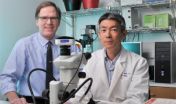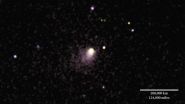(Press-News.org) Cancer care has a new side effect. Along with the distress that comes with a cancer diagnosis and the discomforts of treatment, more patients now have to deal with "financial toxicity," the expense, anxiety and loss of confidence confronting those who face large, unpredictable costs, often compounded by decreased ability to work.
In the July issue of Cancer, a team of University of Chicago cancer specialists describe the first tool — 11 questions, assembled and refined from conversations with more than 150 patients with advanced cancer — to measure a patient's risk for, and ability to tolerate, financial stress. The researchers named their patient-reported outcome measure COST (COmprehensive Score for financial Toxicity).
"Few physicians discuss this increasingly significant side effect with their patients," said study author Jonas de Souza, MD, a head-and-neck cancer specialist at the University of Chicago Medicine. "Physicians aren't trained to do this. It makes them, as well as patients, feel uncomfortable," he said. "We aren't good at it. We believe that a thoughtful, concise tool that could help predict a patient's risk for financial toxicity might open the lines of communication. This gives us a way to launch that discussion."
The timing is right. The cost of health care in the United States is rising faster than the gross domestic product. The cost of cancer care is rising faster than the cost of health care, and the cost of new cancer drugs is rising faster than the cost of overall cancer care.
Financial pain may extend beyond treatment. A recent study from the Centers for Disease Control and Prevention found that 30 percent of cancer survivors are not able to return to work, or have decreased ability to work. Annual medical expenditures increase by more than $4,000 for males who have had cancer and by nearly $3,300 for females.
"We need better ways to find out which patients are most at risk," de Souza said. "Then we can help them get financial assistance. If patients know what to expect, they may want their physicians to consider less costly medications."
Development of the COST questionnaire began with a literature review and a series of extensive interviews. de Souza and colleagues spoke with 20 patients and six cancer professionals, as well as nurses and social workers. That produced a list of 147 questions. The researchers pared the list down to 58 questions. Then they asked 35 patients to help them decide which of the remaining questions were the most important. The patients narrowed the list down to 30.
"In the end, 155 patients led us, with some judicious editing, to a set of 11 statements," de Souza said. "This was sufficiently brief to prevent annoying those responding to the questions but thorough enough to get us the information we need."
All 11 entries are short and easy to understand. For example, item 2 states: My out-of-pocket medical expenses are more than I thought they would be. Item 7, more optimistic, states: I am able to meet my monthly expenses. For each question, patients choose from five potential responses: not at all, a little bit, somewhat, quite a bit, or very much.
Learning how a patient responds may help caregivers determine who is likely to need education, financial counseling, or referral to a support network. The quiz may also predict who is likely to have problems and will require interventions.
All patients who helped develop the study had been in treatment for at least two months and had received bills. Excluding the top 10 percent and the bottom 10 percent, patients in the study earned between $37,000 and $111,000. The median annual income for these patients was about $63,000.
The researchers expected that financial toxicity would correlate with income. "But in our small sample that did not hold up," de Souza said. "People with less education seemed to have more financial distress, but variations in income did not make much difference. We need bigger studies to confirm that, but at least we now have a tool we can use to study this."
The researchers are now conducting a larger study to validate these findings and correlate the newly developed scale with quality of life and anxiety in cancer patients.
"We need to assess outcomes that are important for patients," de Souza said. The cost burden cancer patients experience is definitely one. Measuring this toxicity is the first step towards addressing this important issue. "At the end," he added, "this is another important piece of information in the shared-decision-making process."
INFORMATION:
The National Institutes of Health funded the study through a Clinical and Translational Science Award to the University of Chicago Institute for Translational Medicine. Additional authors of the study were Bonnie Yap, Fay Hlubocky, Kristen Wroblewski, and Christopher Daugherty, from the University of Chicago, as well as David Cella, from Northwestern University.
For cancer patients, new tool predicts financial pain
2014-06-20
ELSE PRESS RELEASES FROM THIS DATE:
Researcher discovers ovarian cancer treatment
2014-06-20
(Phoenix Ariz. June 19, 2014) -- Doctors at the University of Arizona Cancer Center at St. Joseph's Hospital and Medical Center in Phoenix reported today in Lancet Oncology that a new treatment for ovarian cancer can improve response rates (increase the rate of tumor shrinkage) and prolong the time until cancers recur. In addition, this breakthrough showed a trend in improving survival although these data are not yet mature.
Trebananib (formally known as AMG 386; Amgen) is a first-in-class peptide-Fc fusion protein (or peptibody) that targets angiogenesis (the growth ...
Can we see the arrow of time?
2014-06-19
Einstein's theory of relativity envisions time as a spatial dimension, like height, width, and depth. But unlike those other dimensions, time seems to permit motion in only one direction: forward. This directional asymmetry — the "arrow of time" — is something of a conundrum for theoretical physics.
But is it something we can see?
An international group of computer scientists believes that the answer is yes. At the IEEE Conference on Computer Vision and Pattern Recognition this month, they'll present a new algorithm that can, with roughly 80 percent accuracy, determine ...
New driver of atherosclerosis offers potential as therapeutic target
2014-06-19
DALLAS – June 19, 2014 – A new driver of atherosclerosis has been identified by researchers at UT Southwestern Medical Center. This molecule, known as 27HC (27-hydroxycholesterol), has been found to exacerbate the development of the condition, and may prove to be a promising therapeutic target.
Atherosclerosis is characterized by the build-up of lesions (or plaques) formed from lipids, such as cholesterol and fatty acids. Ruptured plaques can partially or completely block blood flow, potentially leading to a heart attack or stroke. A member of a larger family of molecules ...
NASA's swift satellite tallies water production of Mars-bound comet
2014-06-19
In late May, NASA's Swift satellite imaged comet Siding Spring, which will brush astonishingly close to Mars later this year. These optical and ultraviolet observations are the first to reveal how rapidly the comet is producing water and allow astronomers to better estimate its size.
"Comet Siding Spring is making its first passage through the inner solar system and is experiencing its first strong heating from the sun," said lead researcher Dennis Bodewits, an astronomer at the University of Maryland College Park (UMCP). "These observations are part of a two-year-long ...
NASA's Hubble finds dwarf galaxies formed more than their fair share of universe's stars
2014-06-19
They may be little, but they pack a big star-forming punch. New observations from NASA's Hubble Space Telescope show small galaxies, also known as dwarf galaxies, are responsible for forming a large proportion of the universe's stars.
Studying this early epoch of the universe's history is critical to fully understanding how these stars formed and how galaxies grew and evolved 3.5 to 6 billion years after the beginning of the universe. The result supports a decade-long investigation into whether there is a link between a galaxy's mass and its star-forming activity, and ...
Georgia Tech research identifies Android security weaknesses caused by performance design
2014-06-19
Georgia Tech researchers have identified a weakness in one of Android's security features and will present their work at Black Hat USA 2014, which will be held August 6-7 in Las Vegas.
The research, titled Abusing Performance Optimization Weaknesses to Bypass ASLR, identifies an Android performance feature that weakens a software protection called Address Space Layout Randomization (ASLR), leaving software components vulnerable to attacks that bypass the protection. The work is aimed at helping security practitioners identify and understand the future direction of such ...
NASA and NAU researchers welcome unexpected asteroid findings
2014-06-19
What seemed to be rock-solid assumptions about the nature of small asteroids may end in collections of rubble or even a cloud of dust, but in such findings lies the lure of the unexpected.
Northern Arizona University researchers David Trilling and Michael Mommert, while playing a well-defined role in the NASA Asteroid Initiative, are beginning to wonder if they have found a separate path of investigation.
The two researchers presented their findings about asteroid 2011 MD on Thursday during a NASA event updating progress on the path to capturing a small asteroid and ...
A new tool to confront lung cancer
2014-06-19
Only 15% of patients with squamous cell lung cancer – the second most common lung cancer – survive five years past diagnosis. Little is understood about how the deadly disease arises, preventing development of targeted therapies that could serve as a second line of defense once standard chemotherapy regimens fail.
Published online in Cell Reports on June 19, Huntsman Cancer Institute investigators report that misregulation of two genes, sox2 and lkb1, drives squamous cell lung cancer in mice. The discovery uncovers new treatment strategies, and provides a clinically relevant ...
A better imager for identifying tumors
2014-06-19
WASHINGTON, June 19, 2014—Before they excise a tumor, surgeons need to determine exactly where the cancerous cells lie. Now, research published today in The Optical Society's (OSA) journal Optics Letters details a new technique that could give surgeons cheaper and more lightweight tools, such as goggles or hand-held devices, to identify tumors in real time in the operating room.
The new technology, developed by a team at the University of Arizona and Washington University in St. Louis, is a dual-mode imager that combines two systems—near-infrared fluorescent imaging to ...
Swiftly moving gas streamer eclipses supermassive black hole
2014-06-19
Astronomers have discovered strange and unexpected behaviour around the supermassive black hole at the heart of the galaxy NGC 5548. The international team of researchers detected a clumpy gas stream flowing quickly outwards and blocking 90 percent of the X-rays emitted by the black hole. This activity could provide insights into how supermassive black holes interact with their host galaxies.
The discovery of the unusual behaviour in NGC 5548 is the result of an intensive observing campaign using major ESA and NASA space observatories, including the NASA/ESA Hubble Space ...






